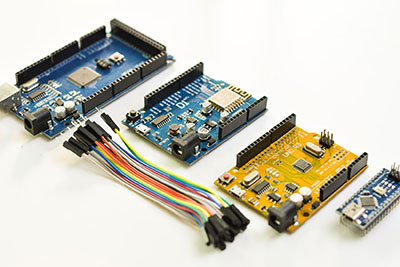Battery Holders Adapt to Handheld Medical Device Needs
By Thomas Blaha
President, Memory Protection Devices
During the design of a handheld medical device, the battery holder selection is often left to the very end. We could warn that significant issues such as shorter run times, excessive weight, or unusual shapes can lead to end user dissatisfaction, leaving your company at a competitive disadvantage. We could also promise that early considerations of existing battery holder technology would eliminate compromises, redesigns, tooling changes, expensive customized parts, and delays. Instead, we have broadened the range of battery holder options, to allow the designers increased flexibility to fit them into even the most challenging designs. New battery holder designs have lower profiles, smaller footprints, and resist shocks, vibrations, and drops like never before. The following are just a few ways that battery holder designs have begun to satisfy the unique, and necessarily strict, conditions of medical device manufacturing.
For decades now, coin cell batteries have sat flatly among the various components of many PCBs. However, in increasingly miniaturized handheld devices, a cell with a large diameter can begin to take up a disproportionately large surface area. Vertical coin cell holders were introduced to address this issue, and at least it gave designers a choice between a wide or thick device. Radical rethinking was needed – not of how a battery should sit ona PCB, but of where a battery should sit in a PCB. To minimize the height of vertical coin cell holders, new designs may call for a small hole to be drilled in the surface of the PCB. This allows for the battery holder to sit not on, but partially through the PCB. Thus, the choice between a fat or wide device can be mitigated. The same concept is also applied to the newest horizontal coin cell holders. This new style of battery holder design works brilliantly as both a through-hole and surface mount component, meaning it can be utilized to clear up space on all types of PCBs.
To make stronger and more resilient medical grade battery holders, it was necessary to examine new materials beyond simple polypropylene. Liquid crystal polymers have been widely selected for many new coin cell holders for a variety of reasons. LCP can withstand the brutal peak temperatures of 260°C that reflow ovens often operate at, and it also boasts excellent chemical and humidity resistance that can withstand multiple applications of most sterilization methods. Even while having walls that are 1 mm or thinner, LCP is rigid enough to eliminate the weight shifting that causes intermittent contact, plastic fractures, crushed contacts, and a host of other common problems with less strong plastics. Finally, LCP flows so well during molding that it can meet the tight quality control tolerances required by medical devices, all while maintaining the cost savings associated with making a part with the very thin walls that LCP has become known for.
Of course, a strong housing for the holder means nothing if the contacts aren’t maintaining a constant connection with the battery. Over time, battery contacts have developed from simple tin-plated steel to combinations are complicated as gold over nickel over copper over a phosphor bronze base. The nonreactive nature of gold makes the contacts resilient like the LCP body for sterilizations, and can also keep the contacts safe from forms of corrosion associated with shipping and storing. New contacts can also have features such as an anti-wicking shape for more consistent and stronger solder joints on the board, or recurved positive contacts that increase durability, enhance battery retention, and reduce connection failures.
These are just some of the recent ways in which the battery holder community has enhanced our designs with the medical community in mind. However, it is a two way process – we need the feedback from medical device design engineers who use battery holders in order to know what works and doesn’t. And although nobody knows what the next big battery holder design breakthrough will be, we certainly hope to work with you on developing it.





